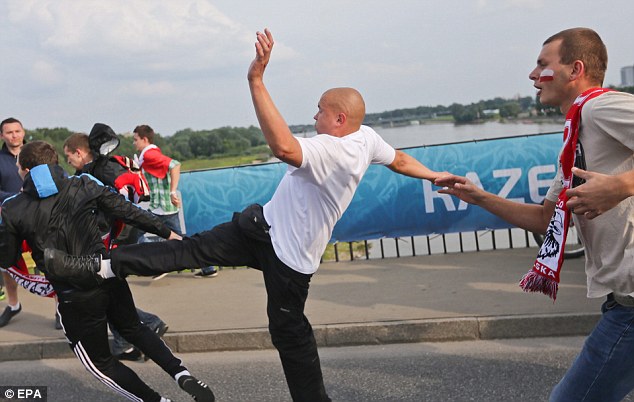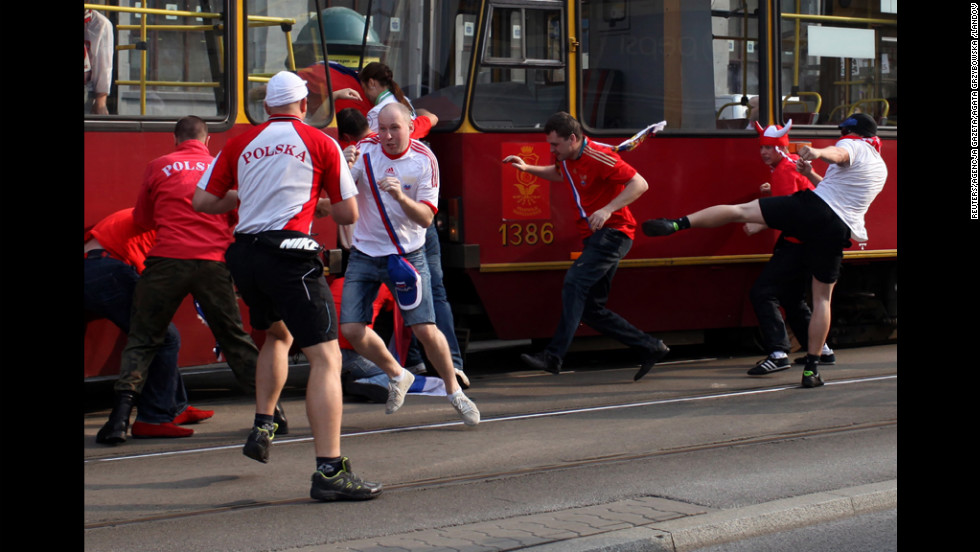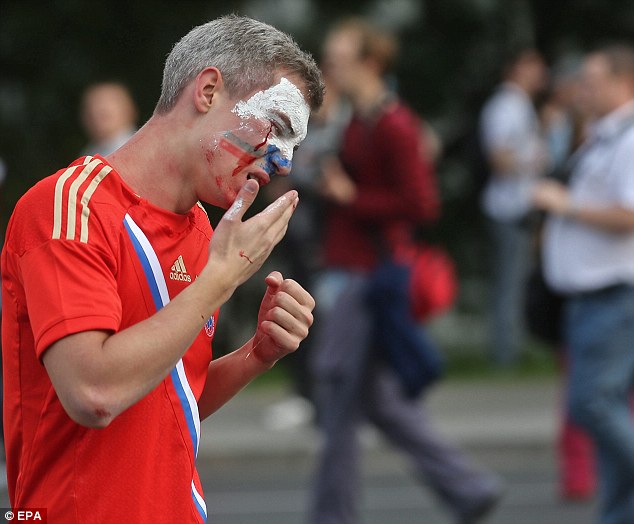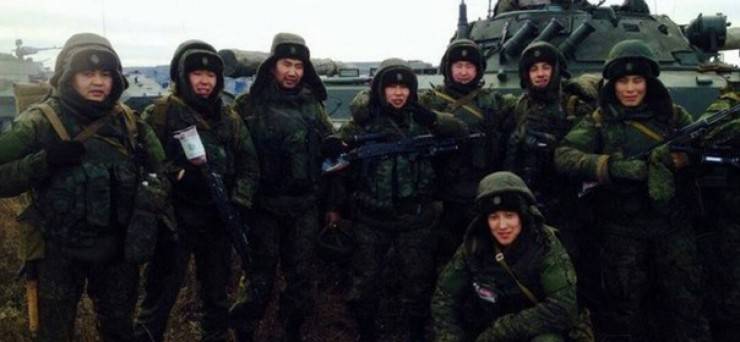Gypsies, and Muslims seem to poll even worse in Poland, which is a good thing.
However, I wish more Poles were more anti-Western-European.
Britain has near lynch mob / Pogrom attacks of Poles, and a constant bombardment of anti-Polish news for years.'
Germany has Polish thief jokes, blaming Poland for the Holocaust on it's media, and is threatening sanctions on Poland.
France has Polish plumber jokes, and is threatening sanctions on Poland.
you are a paid troll from Olgino non Pole thinks so , muslim Lipka are our heroes. the Juchi Mongols who we all hate ,
what ALL EVIL what they do to us...
"
Cases of mass rape occurred in major Polish cities taken by the Red Army. In
Kraków, Soviet entry into the city was accompanied by the wave of rapes of women and girls, and the widespread theft of personal property. According to
Prof. Chwalba of
Jagiellonian University, this behavior reached such a scale that the Polish communists installed in the city by the
Soviet Union, composed a letter of protest to
Joseph Stalin himself. At the
Kraków Main station, Poles who tried to rescue the victims of gang rape were shot at. Meanwhile, church masses were held in expectation of the Soviet withdrawal.
[6]
Polish women in
Silesia were the target of mass rape along with their German counterparts even after the Soviet front moved much further west.
[3][7] In the first six months of 1945, in
Dębska Kuźnia 268 rapes were reported. In March 1945 near
Racibórz, 30 women captured at a linen factory were locked in a house in
Makowo and raped over a period of time under the threat of death. The woman who gave her testimony to the police, was raped by four men. German and Polish women were apprehended on the streets of
Katowice,
Zabrze and
Chorzów and gang raped by drunken soldiers, usually outdoors.
[3] According to Naimark, the Red Army servicemen did not differentiate along the ethnic lines, or between victims and occupiers.
[8]
Polish and German women in
Warmia and
Masuria endured the same ordeal, wrote Ostrowska & Zaremba.
[3] One letter from the
Recovered Territories claimed that in the city of
Olsztyn in March 1945, practically no woman survived without being violated by the Soviet rapists "irrespective of their age". Their ages were estimated to range from 9 to 80. Sometimes, a grandmother, a mother and a granddaughter were among the victims. Women were gang raped by as many as several dozen soldiers. In a letter from
Gdańsk dated 17 April 1945, a Polish woman who acquired work around the Soviet garrison reported: "because we spoke Polish, we were in demand. However, most victims there were raped up to 15 times. I was raped seven times. It was horrible." A letter from
Gdynia, written a week later, said that the only resort for the women was to hide in the basements all day.
[9]"
--
"
Massacre
Like in his previous battles, when he had ordered his men to spare non-combatants and the evacuation of townspeople,
[12] Suvorov issued an order on 3 November 1794 that included special instructions regarding the treatment of enemy civilians, "Do not enter houses; spare any enemy asking for quarter; do not kill unarmed men; do not make war on women; do not touch youngsters".
[13][14] However, after the battle spread to the streets
[15] and the insurgents hid in civilian houses,
[16] vowing to fight to the last man,
[17] the Russian troops, against the orders given by Suvorov prior to the battle, started to kill remaining insurgents and many townspeople in revenge for the slaughter of the Russian Garrison in Warsaw,
[18][19][1][20] during the
Warsaw Uprising in April 1794, when two thousand
[21] Russian military servicemen stationed in Warsaw were massacred by armed Polish townspeople, who played a major role in the attack,
[22] and soldiers and cut with spikes and axes.
[23] The massacre, which resulted in the death of 2,265 men,
[24][25] including unarmed soldiers of the Kiev Regiment killed while attending church service,
[26] enraged Suvorov's troops,
[1][18][19] and they shouted "No quarter!"
[18] Faddey Bulgarin recalled the words of General Ivan von Klugen, who took part in the Battle of Praga, “We were being shot at from the windows of houses and the roofs, and our soldiers were breaking into the houses and killing all who happened to get in the way… In every living being our embittered soldiers saw the murderer of our men during the uprising in Warsaw… It cost a lot of effort for the Russian officers to save these poor people from the revenge of our soldiers… At four o'clock the terrible revenge for the slaughter of our men in Warsaw was complete!”
[18] Denis Davydov wrote on this, “During the assault on Praga the rage of our troops, who were burning with revenge for the treacherous slaughter of our comrades by the Poles, reached extreme limits”.
[19] Over the course of the assault, Russian field artillery was supporting the infantry by firing cannon balls and bombs at the parts of the city held by the rebels, causing much damage, as pointed out in the report of Suvorov. The latter noted, "The streets and squares of Praga was strewn with dead bodies, blood was flowing in streams."
[27][28] The wooden houses of Praga caught fire, leading to the massive explosion of a powder magazine.
[18]
The exact death toll of that day and the ratio of combatants to non-combatants killed varies in different sources. It is estimated that either 9,000 rebels and 7,000 civilians
[6] or up to 20,000 rebels and civilians died,
[8] of which thousands drowned while trying to cross the Vistula.
[29][17] In his report, Suvorov estimated the number of dead insurgents and civilians at 13,340, adding that more than 3,000 drowned in the Vistula while trying to retreat, whereas 12,860 were captured, of which 10,000 were later released.
[27][30] Similar figures appear in the writings of
Major General Lev Engelgardt, who served under Suvorov: 13,000 killed, 2,000 drowned, 14,680 were captured, of which 8,000 were released the next day.
[31] The practice of releasing Polish prisoners of war is confirmed by a letter of
State Secretary Dmitry Troschinsky to Count
Alexander Vorontsov on 24 November 1794, "Count Suvorov has rendered great services by taking Warsaw, but is unbearably annoying with his inconsistent orders there. All Poles in general, not excluding the main rioters, are being released by him to their homes".
[32][33] The fact that thousands of Poles were taken alive and released soon afterwards is also evident in other documents, such as the report sent by Suvorov to Count
Pyotr Rumyantsev on 7 November, regarding the fate of some of the captives, "Polish Praga prisoners with 3 generals, staff and ober-officers, up to 500, and lower ranks, up to 4,000, as well as the artillery that got in our hands, 101 guns, today will be sent to Varkovic at
Kiev. Out of the captured insurgents and defending townspeople, more than 6,000 have been released, and also the Prussians who were in captivity, 313, and 63 Austrians, which were sent to their commands".
[34] 500 captured Polish staff and ober-officers were released by Suvorov en route to Kiev, as is confirmed by the autobiography of Major General Sergey I. Mosolov, who escorted them in 1794.
[35] It was thought that unruly
Cossack troops were partly to blame for the uncontrolled destruction in the city.
[36] Some Russian historians claim that Suvorov tried to stop the massacre by ordering the destruction of the bridge to Warsaw over the
Vistula river
[37] with the purpose of preventing the spread of violence to Warsaw, while others believe that by doing this he wanted to prevent Polish troops stationing on the left bank from attacking his forces.
[19] Other historians dispute this.
[38] The massacre of Praga dented Suvorov and the Russian army's reputation throughout Europe.
[39]"







